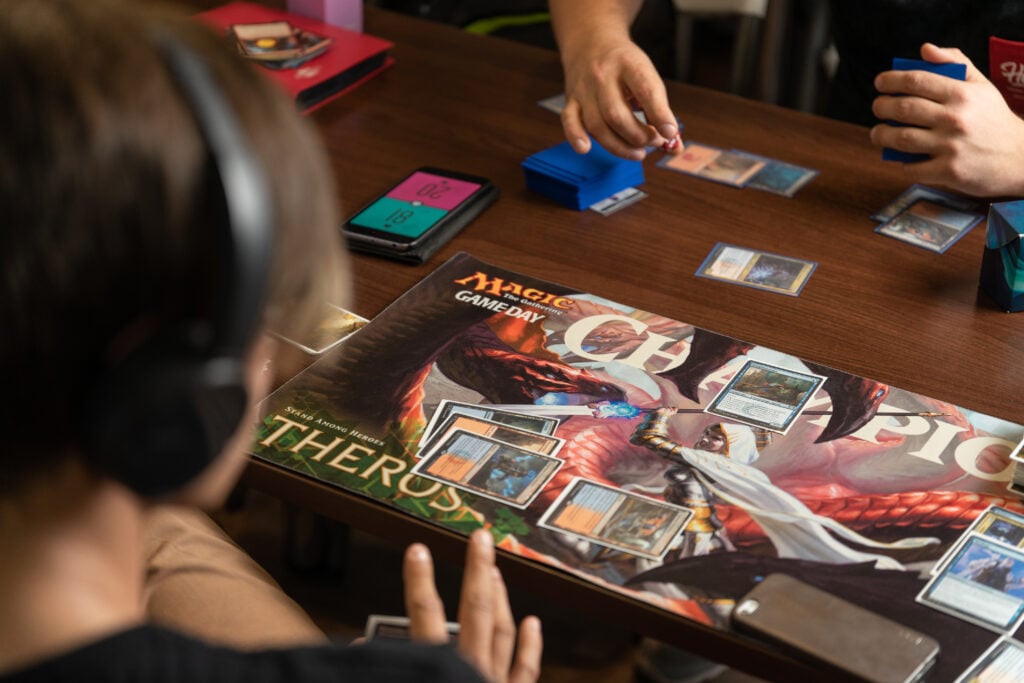
Getting my kids excited about Magic: The Gathering has been a rewarding experience on my parenting journey. My eldest daughter is seven now, and while she’s proudly declared herself “more of a Pokémon person” (her dad bought her cards for Christmas last year), I’ve started to see her curiosity spark whenever she watches me play Magic: The Gathering Arena during my downtime. We’ve even been playing Pokémon starter matches to build her confidence before she’s ready for local comic shop events — a stepping stone, I hope, to the world of MTG.
That love for the game actually started years before she was born. In 2017, I reconnected with my high school sweetheart — now my boyfriend and the father of our three children — and one of the first things we bonded over again was Magic: The Gathering. He taught me how to play, and I was instantly hooked by the creativity of deck-building and the endless strategies behind every card. Now, between caring for our four kids (including his eldest daughter, whom I proudly call my stepdaughter), we still make time for Commander nights whenever we can.
If you’re a parent who loves the game too — or one who’s just discovering it — here are some strategies for passing that same spark of creativity and connection on to your own kids.
Start With the Lore
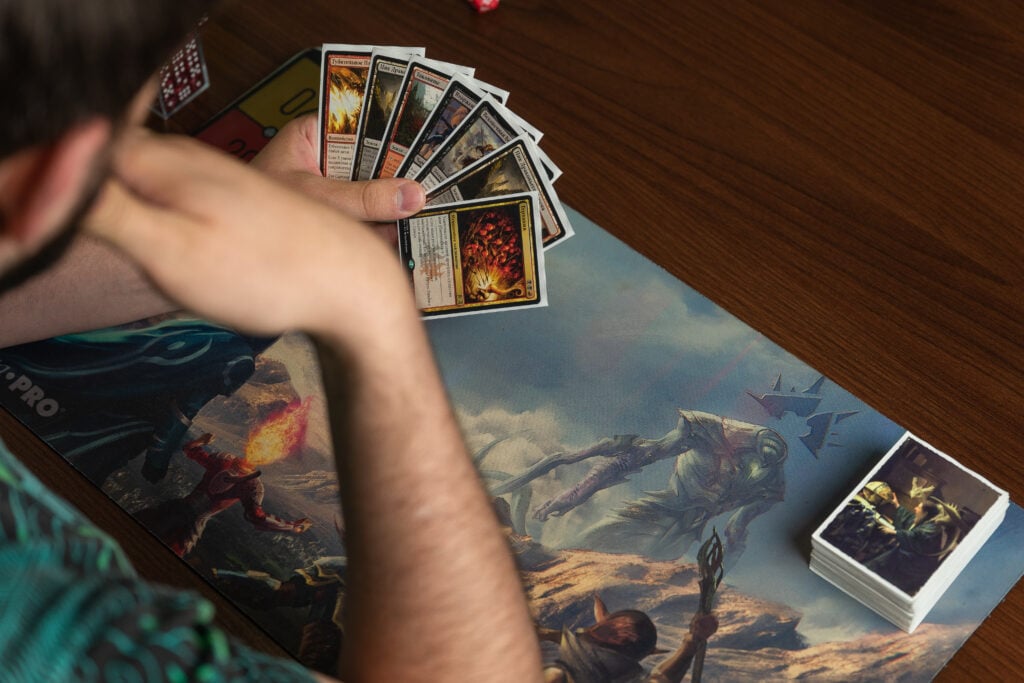
Magic: The Gathering has over three decades of lore, with each set diving into a new plane, a different plane, or a combination of the two throughout the game’s universe. For example, Innistrad: Midnight Hunt debuted in September 2021 and Wizards of the Coast quickly took players on a revisit of the plane when Innistrad: Crimson Vow came out two months later in November 2021. You can also teach your kids some of the backstories about the creatures and planeswalkers in different sets to get them excited about the game. You don’t have to go in-depth because Magic’s lore can get highly complex.
What Kids Learn From Magic’s Lore: As a Magic player for the past 8 years, I’m still exploring back stories of the lore behind the most recent sets. Learning the lore is another element of excitement to playing Magic: The Gathering because the story keeps going as new characters, planes, and creatures are revealed in set expansions. Kids exploring Magic lore with their parents can nurture their creativity and imagination as they learn that stories can evolve with multiple layers.
Start With A Simple Magic Format
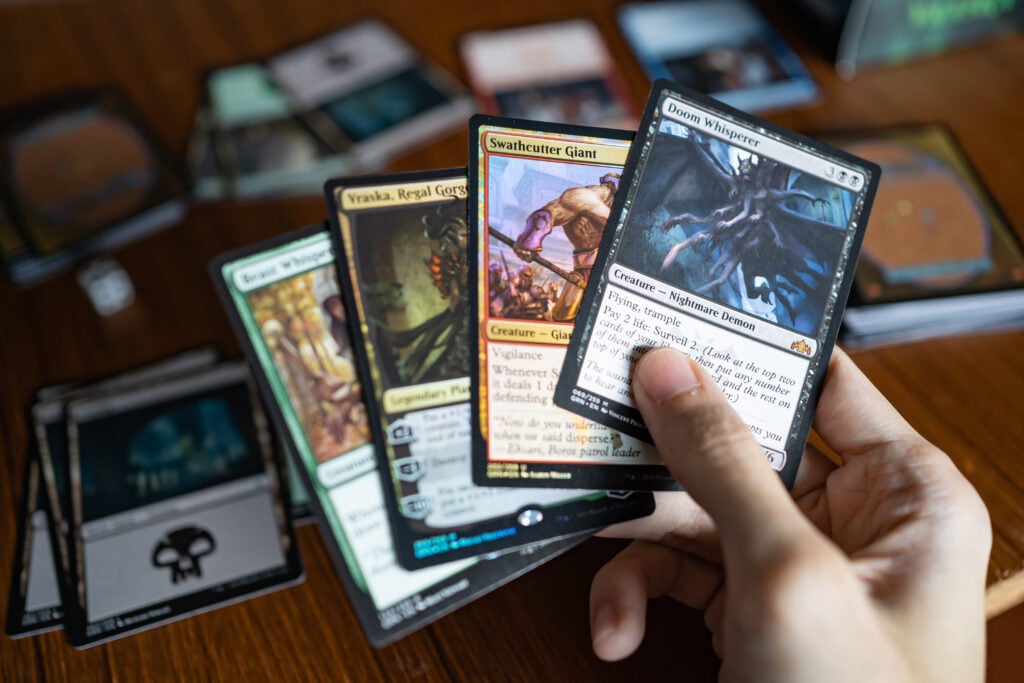
Simpler Magic game formats can introduce younger players to the basic gameplay mechanics. Learning Standard (60-card decks from most recent sets) and Commander (100-card format with a chosen legendary creature as a commander) can always come later in their Magic journey.
Jumpstart is a simple pre-constructed Magic format where players open two surprise-themed packs to mesh together for an instant 40-card deck. Every pack comes with enough lands to cast the creatures contained in them. For example, one pack may have Dragons and another could contain Unicorns. Wizards of the Coast also has welcome decks or planeswalker decks perfect for beginners to learn how to cast spells, declare attacks, calculate combat damage, and assess changes in life totals.
What Kids Learn From A Simple Magic Format: Younger players can learn strategy basics, creature combat, and mana balance without feeling overwhelmed. Mana are the land cards that help to cast spells in the game. The standard rule is to play one land a turn, but specific cards and deck types (landfall) can help you get more lands out in one turn. That’s a lesson for another article!
Pick A Themed Deck Your Child Will Like
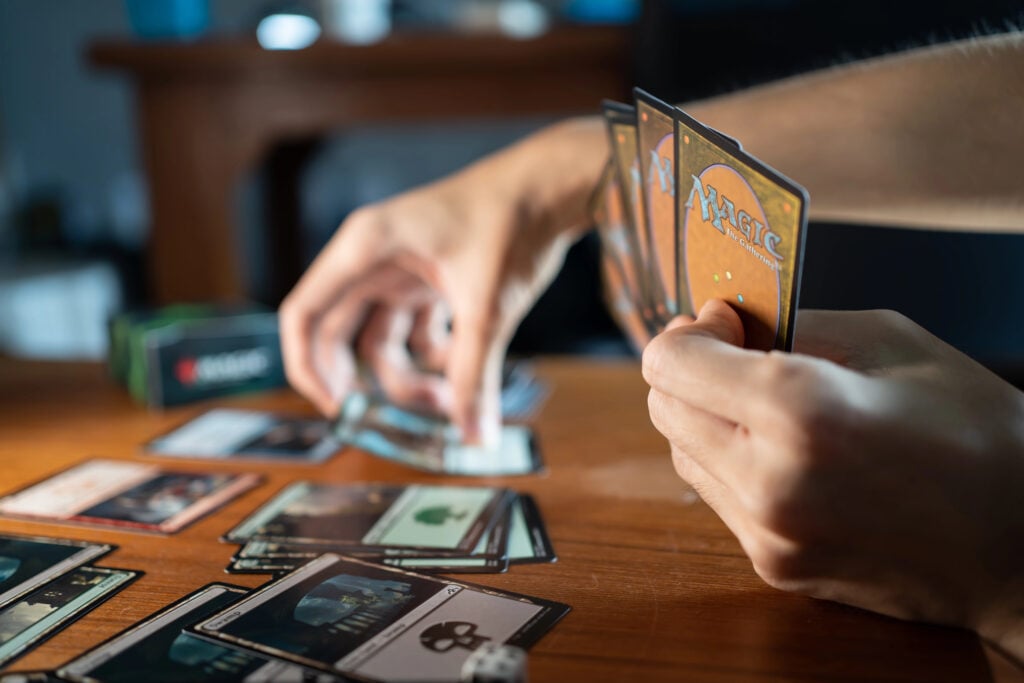
There are 299 creature types in Magic: The Gathering. That means there are so many possibilities for typal decks you can build for your kids. From cutesy creatures like Rabbits and Unicorns to fearsome brawlers like Dragons and Werewolves, there’s a theme that matches everyone’s personalities. Fantasy character lovers will vibe with Elf and Merfolk decks. Kids who don’t mind the spooky side may like Zombies and Vampires.
You can start by picking up pre-constructed Starter or Commander decks. These options have decklists available on the Magic: The Gathering official site to evaluate themes before your child chooses. Meshing 2 Jumpstart packs together is also convenient for instant gameplay. This choice is more of a surprise element if you do a fun sealed event at home. However, you can also open a booster box of Jumpstart packs and have your child choose two themes they like to combine into an instant 40-card deck.
Universes Beyond and Secret Lair sets of familiar characters can get your kids excited about Magic: the Gathering, too. My eldest daughter loves her dad’s SpongeBob SquarePants card, a Secret Lair Drop version of Jodah, the Unifier, from the 2022 set expansion Dominaria United. A Spider-Man Universes Beyond set just came out in September 2025. The two Universes Beyond sets I’m most excited for (and I’m a 31-year-old adult) are Avatar: The Last Airbender debuting in November 2025 and the Teenage Mutant Ninja Turtles slated for a March 6, 2026 release just 3 days before my eldest daughter’s 8th birthday.
What Kids Learn From Picking Their Deck: Choosing a deck theme teaches kids to take ownership, showcase self-expression, and sharpen their decision-making skills. Magic is more than winning games against your opponents. It’s more about the fun and creativity behind crafting your decks. As you keep playing, edits can be made with different cards to enhance strategy and overall utility with your win condition. My boyfriend and I asked my eldest daughter which creature type she would like to try for a Magic deck, and she’s excited to try Unicorns. The Lathiel, the Bounteous Dawn Commander deck I built a while back has mostly Unicorns and other creature types supporting its life gain theme.
Set Your Child Up With An MTG Arena Account
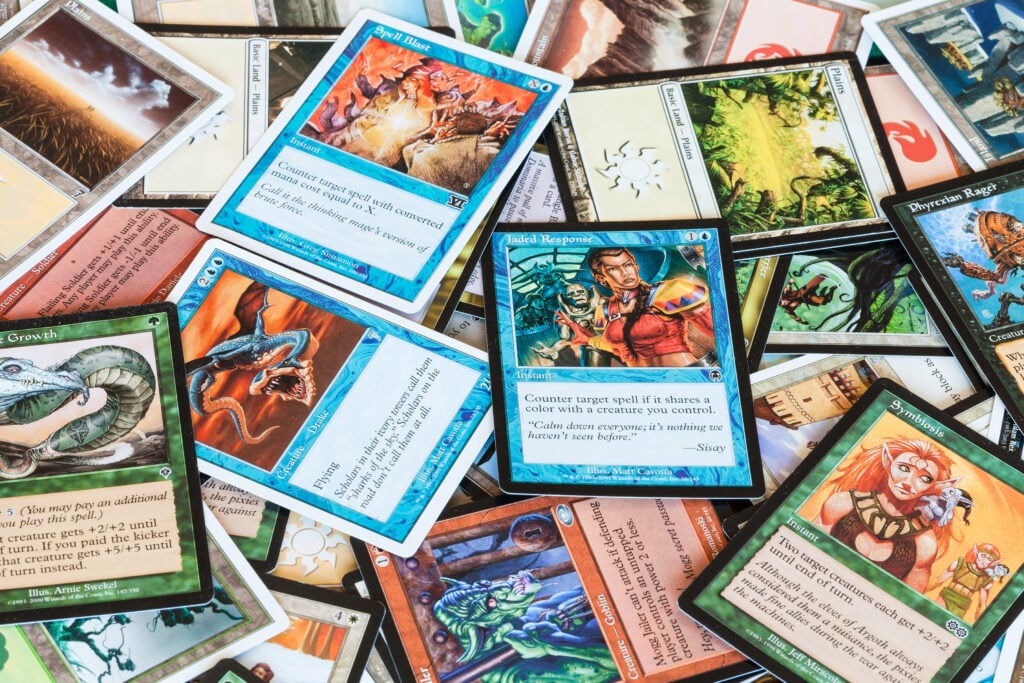
This is something I have yet to do for my seven-year-old daughter (my other children are 3 and 2, so it’ll be a while before they can learn the game). However, I want to definitely set up a Magic: The Gathering Arena account for her as she gets used to playing more tabletop games. For now, she likes watching me when her father and I play Arena games remotely a few nights a week.
MTG Arena is the official online gameplay platform for fans to play remotely with opponents worldwide. It’s available for mobile download on the Google Play Store and the Apple App Store, or you can play on PC. Be mindful that the game is rated T for Teen, as some cards depict scary Zombies or other creatures biting each other, causing them to bleed. Parental guidance is suggested; no matter the age, you may allow your child to play this game.
You can participate in current drafting events to make it feel like you’re competing in a tournament at your LGS (local game store). A draft event involves participating players taking turns selecting cards from digital sealed packs to construct a deck for a tournament.
There are many other formats, including Standard, Pauper, Alchemy, Pioneer, and Brawl. Standard allows players to craft decks with cards from up to the most recent 12 Magic expansions. There is a Standard rotation every fall, in which the four oldest sets come out of Standard, and four of the newest sets take their place. Pauper only includes standard cards, while Brawl is much like Commander, but with 40 cards instead of 100. However, there is a Brawl version that allows 100 cards for die-hard Commander players (much like myself). Pioneer will enable players to use cards in decks from Return to Ravnica (2012) to the present.
Have your child begin with a Starter deck in one of the formats when they first play Arena matches. As they build confidence in the game, you can help them craft custom decks based on their favorite themes and play mechanics. We are a cat-loving family, so I know my daughter will enjoy this Cat Attack Standard deck available on Arena when you sign up.
What Kids Learn From Having A MTG Arena Account: Children can learn digital literacy by playing live matches with other Magic lovers. There are no pause buttons on this game, so you must play through to the end without stopping (unless you concede the match early) to see whether you claim victory or face defeat. Youth can also build good sportsmanship as it’s not possible to win every match. You can’t control the cards you draw, but players can still strategically use them to win, possibly.
Make Deck Building A Family Activity
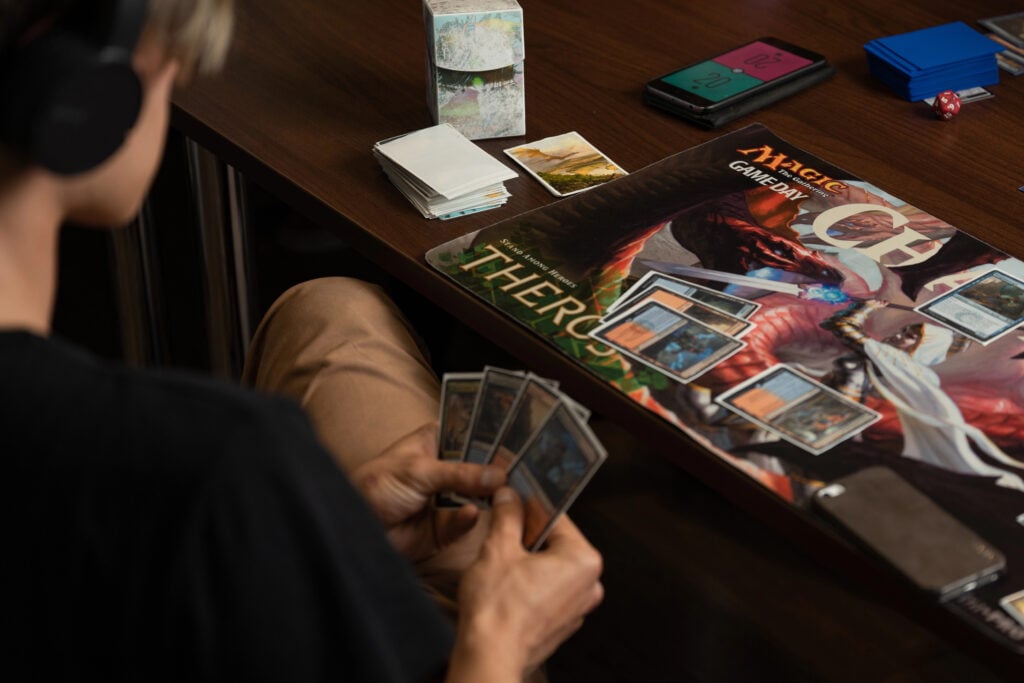
Besides playing Magic digitally, it’s even more fun to take a break from devices and play the game traditionally on a tabletop. My daughter watches me as I build new tabletop Commander decks to play against her father. She’s mainly in awe of the colorful art on the cards, as she wants to be an art teacher when she grows up.
You can have your kids sort cards by color or creature type to keep deck building simple. Any deck can have more than one color. It’s simplest to have 1 or 2 colors for beginning players so they can keep track of their mana more easily when planning which spells to cast.
Young deck builders can get creative with their creations by selecting card sleeves and a deck box to match decks at your LGS. They can also give decks a cool name. For example, if it’s a Horse-themed deck, it can be named “Steadfast Stallions”.
What Kids Will Learn From Family Deck Building: Children can strengthen their math and critical thinking skills. Depending on the format, there’s a specific number of cards allowed in a deck. Kids must learn to choose how much mana, creatures, removal, and interactive spells they need to prepare their decks for any threat.
As my eldest daughter continues to watch me play tabletop and Arena, I can explain concepts like mana curve and casting tactics to maximize value in reaching the win condition. Right now, she thinks that someone with a higher life total means they will eventually be declared the winner. I remind her that anything can happen during a game, depending on the cards that players draw.
Watch MTG Content Together
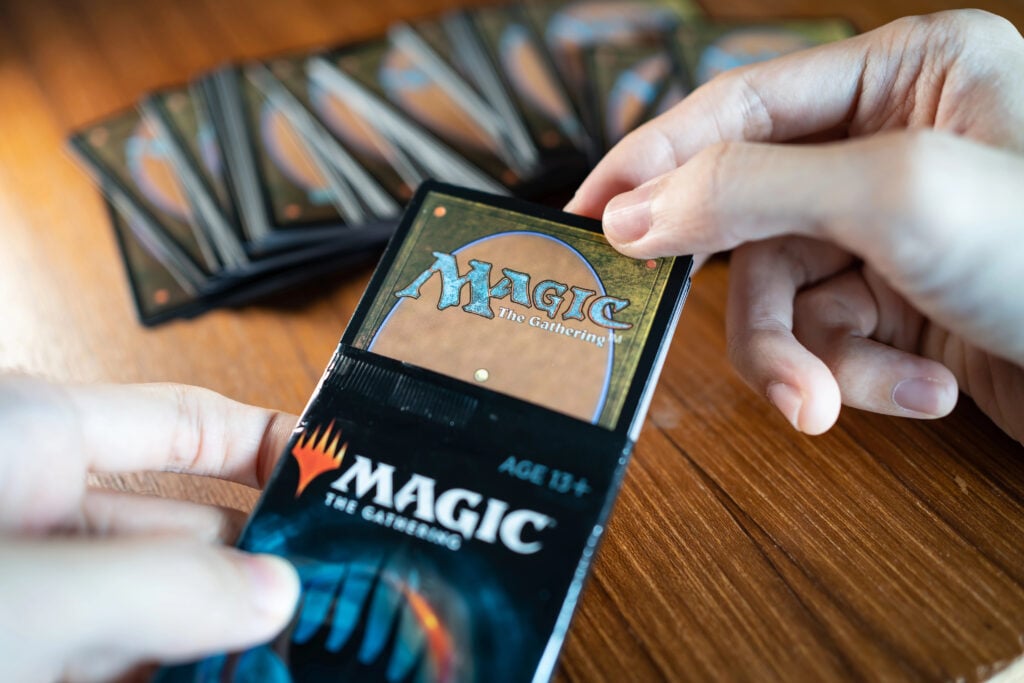
YouTube and Twitch feature family-friendly MTG content creators. My daughter has been watching Game Knights on YouTube with me since 2020 featuring Josh, Jimmy, and the rest of The Command Zone crew. With over 800,000 subscribers, The Command Zone is one of the most popular MTG content creators on the Internet.
The Game Knights duels pit the crew and special guests against one another in Commander battles featuring a specific set expansion. Some special episodes feature fans of the show where players can bring their own Commander decks not tied to a specific Magic set.
What Kids Will Learn From Watching MTG Content: Kids can understand how content creators play their decks with advanced strategies to get the most value. For example, landfall decks may cast a creature with an ability connected to this theme before playing a land to trigger that ability. Youth can also enhance their observation and analytical skills to be successful in the game and in general in their lives. My daughter always asks me questions as we watch Magic content together wondering why a creature died on the battlefield or how all creatures have just disappeared. In most cases, that’s because of every Magic player’s bane of existence: board wipes.
Use MTG To Teach Math And Reading
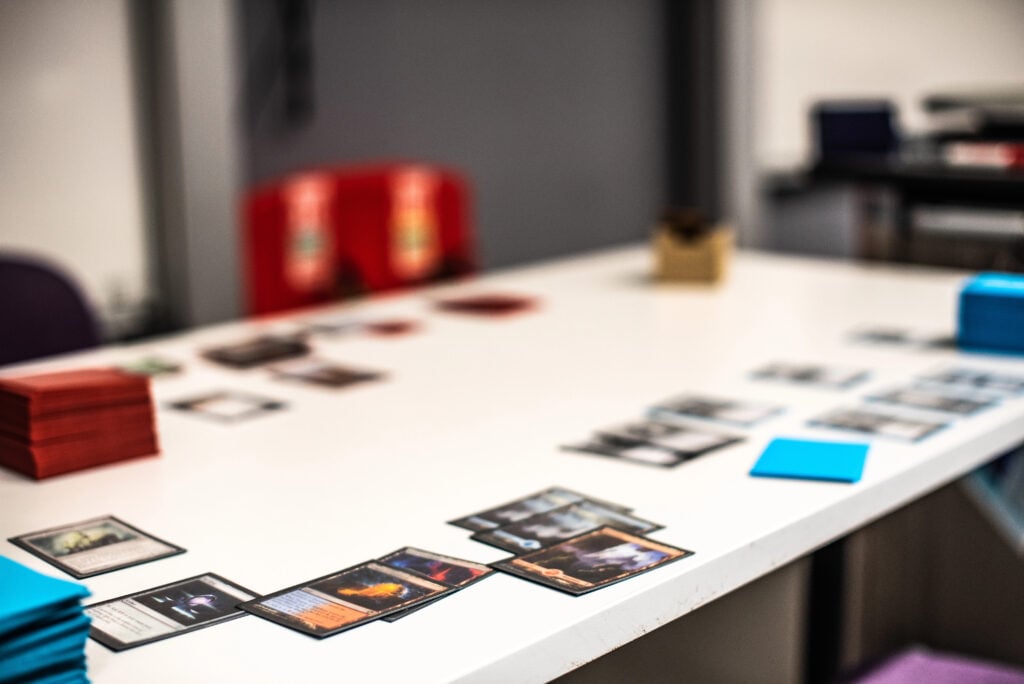
Magic is more than a fun card game. All players can enhance their math skills by calculating changes in life total and when creatures deal combat damage to each other, and when blocks happen. Reading comprehension is necessary to understand how each card affects the battlefield. Critical thinking helps players plan their moves as they wait for their next turn.
Try to have your child calculate changes in life totals and overall combat damage without using a calculator to refine their mental math skills. Kids in 1st or 2nd grade mastering their reading skills may understand most words on a Magic card to play effectively. My daughter is in 2nd grade and sometimes reads cards while standing behind me as I build a tabletop deck.
What Kids Will Learn From How MTG Teaches Math And Reading: Children can improve their math fluency and logical reasoning while having fun with an excellent card game. Knowledge of cards’ mechanics and strategic planning can turn a possible loss into a win if done tactically enough. I always remind my daughter that in life, to work with her resources, and I’ll be telling her to do the same. I’ll also play more Magic: The Gathering together.
Introduce Booster Pack Surprises
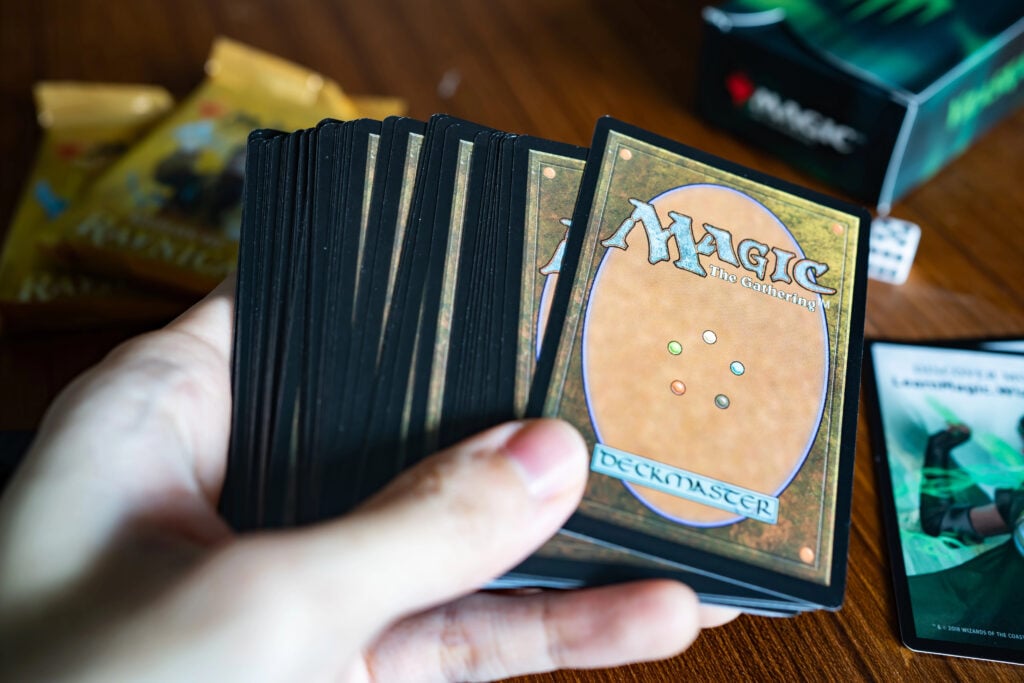
Magic booster packs can be a part of your child’s reward system to get them more excited about the game. If they keep up on their chores all week or bring home a stellar report card from school, you can reward them with a Magic booster pack to expand their tabletop collection. Don’t forget to grab a small storage box to store commons and uncommons, and a binder to keep their rares and mythic cards pristine.
I plan to buy some Bloomburrow booster packs to reward my eldest daughter over time. I think the squirrels, raccoons, and rabbits in the set will get her more excited to play tabletop MTG with me.
What Kids Will Learn From Booster Pack Surprises: Youth learn to appreciate surprises and to be more patient as they open booster packs. Players love pulling chase cards, but it’s not going to happen every time you crack a pack open. Kids just getting into MTG can learn that it’s not about collecting the rarest cards. It’s about finding new ones and feeling joy in discovering the unknown.
Attend LGS Events
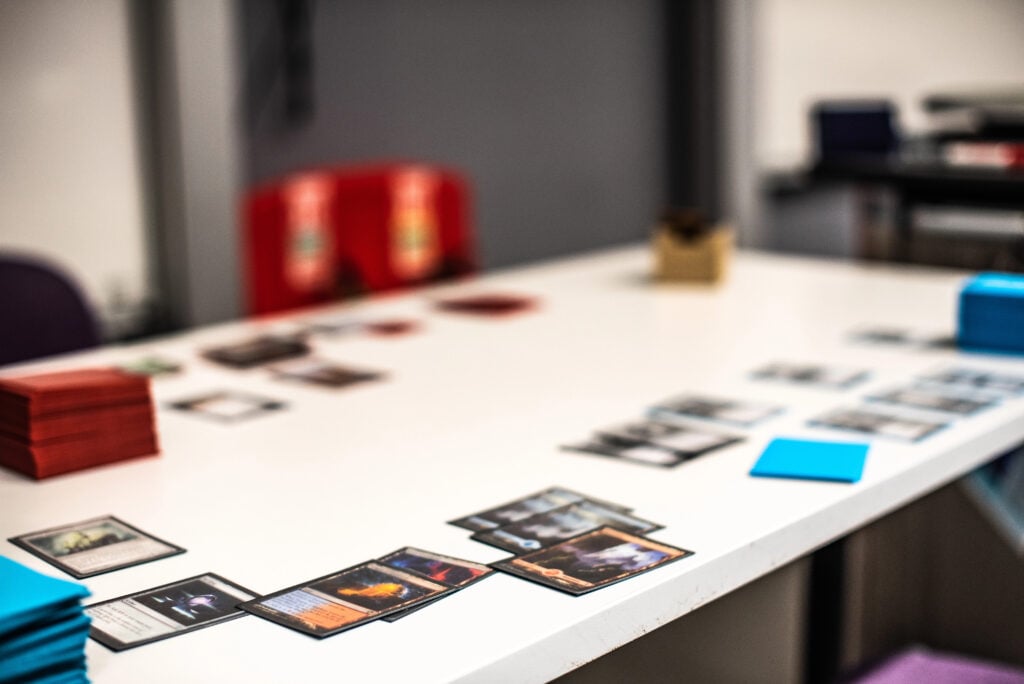
Many game shops host Friday Night Magic events or learn-to-play tutorial gatherings for players new and old to enjoy. When you feel your child is ready, these events can boast many benefits as he or she expands their love of Magic: The Gathering. Kids can experience the social side of Magic by meeting new players, trading cards with them, and participating in friendly tournaments to demonstrate what they’ve learned at home with you. I have yet to take my eldest daughter to a kid-friendly Magic or Pokémon event, but once she’s ready, we will definitely be there!
What Kids Will Learn From Family Deck Building: Sportsmanship is most important when playing a trading card game. Kids can also learn to enhance their communication skills and build confidence in how they play their decks. They can have different play experiences, including gracefully winning and losing kindly while communicating respectfully with other players.
